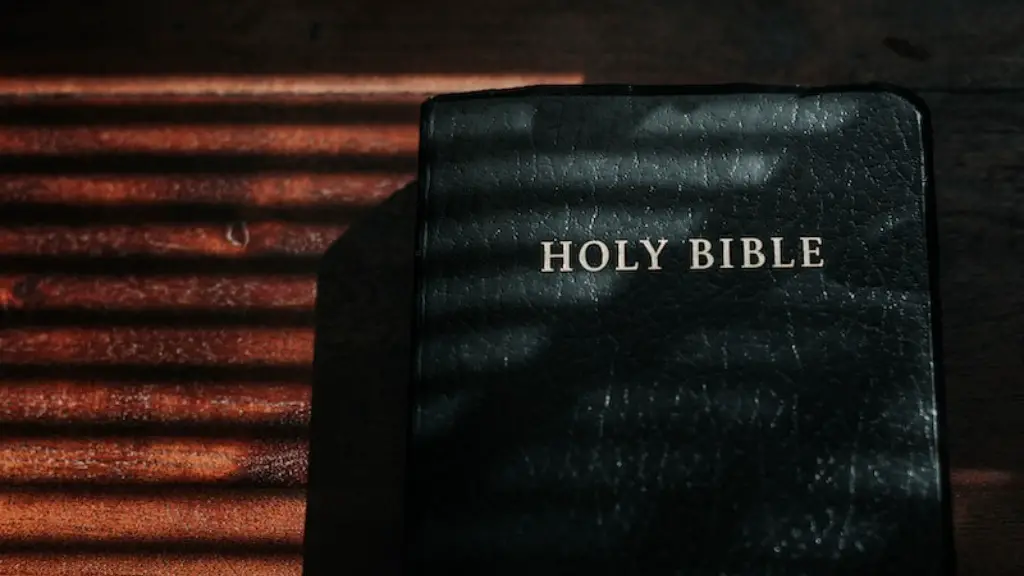During ancient times, Moab was a region in the Middle East. It is mentioned numerous times in the Bible and was home to several peoples, including the Israelites and the Moabites. The ancient Moabites were a Semitic people whose origins can be traced to Abraham. According to the Bible, they were the children of Lot, Abraham’s nephew.
Moab was known as the ‘Land of Moab’. It was located to the south of the Dead Sea and extended from the Arnon River on the eastern side to the Wadi Zered on the western side. The area included the Transjordanian plateau and was bordered by Edom in the south and Ammon in the north.
Moabites had their own language, customs, and religious practices. They worshipped idols and practiced idolatry and participated in pagan rituals. In the early Bible, Moabites were often referred to as enemies of the Israelites. However, the relationship between the two nations was often explained with a nuanced perspective and Moabites were sometimes viewed in a positive light.
The most famous biblical story of Moab is the story of Ruth. Ruth and her mother-in-law Naomi fled to the ‘Land of Moab’ after Naomi and her husband lost their land. Ruth married into a Moabite family but chose to follow her mother-in-law’s God instead. After their return to Bethlehem, Ruth married Boaz, an Israelite. Ruth’s story is an example of diverse people living peacefully side by side.
The Moabites also had their own kingdom for a brief period during the 9th and 8th centuries BCE. The Moabite kingdom is also mentioned in the Bible, and its Kings, along with other Moabites, were described positively in the books of Isaiah and Jeremiah.
The Moabites were eventually conquered by the Assyrians during their invasion of the Levant. The Assyrians deported most of the population and scattered them throughout their empire. After the fall of the kingdom, the Moabite people mostly disappeared from history, though it is speculated that the Nabateans, one of the most important ancient Arab civilizations, may have been descended from the Moabites.
Moabite Religion
Much of what we know today about Moabite religion comes from the Moabite Stone, a monuments erected by king Mesha in the 9th century BCE. It is a unique source of information on the Israelite-Moabite conflict, as well as on ancient Moabite beliefs and customs. According to the inscription, the chief deity of Moab was Chemosh. Very little is known about Chemosh, and it is likely that he was a local variant of the West Semitic god Baal.
In the Moabite Stone, Chemosh is described as the god of war and the giver of victory. It is possible that Chemosh was seen as a protector of the Moabites, as well as the god of fertility and purification. Other Moabite gods mentioned in the inscription include Ashtar-Chemosh and Nebo. While little is known about these gods, it is likely that they held similar characteristics to the chief deity. There are also mentions of various festivals and rituals held in honour of Chemosh.
The Moabite Stone also mentions the worship of other gods from different cultures and nations. For example, the god YHWH, the god of the Israelites, is mentioned. This may suggest that the Moabites practiced religious syncretism, though it is difficult to tell from the inscription.
The Legacy of Moab
While the Moabites eventually disappeared from history, their legacy lives on in the Bible and in other ancient sources. The modern region of Moab is now located in the Kingdom of Jordan. There are also several towns and cities that still bear the name of Moab, hinting at its former significance.
From a religious point of view, the Moabites had a unique pantheon of gods that has since been largely forgotten. Despite their role as antagonists in the Bible, the Moabites have left a lasting impression on early Middle Eastern culture and religion.
Moabites in Modern Culture
The Moabites have also been depicted in modern literature and popular culture. The most famous example of this is the action movie ‘Lara Croft: Tomb Raider’ (2001), which features the ancient city of Moab as a setting. The city is depicted as an ancient ruin populated by the descendants of the original Moabites. Other representations of the Moabites can be found in video games such as ‘Age of Empires II’ and ‘Civilization V’.
The Moabites also feature in modern art, particularly as symbols of resilience. Michelangelo’s painting ‘The Creation of Adam’ (1511) features a figure which has been identified as a Moabite woman. This painting is thought to be a representation of the biblical Ruth, and serves as an example of the lasting legacy of the Moabites.
Conclusion
The Moabites have left a lasting legacy on the Middle East, and their influence can still be seen in culture, art, and religion today. Despite their brief period as an independent kingdom, the Moabites have had a significant impact on the region and the Bible. Through their unique customs and beliefs, they have helped shape the modern Near East, and their story still resonates in the intercultural relationships between nations.



